I picked this up for song recently. Hope these quick pics are okay.
It has a very full skirt. The skirt pleats and yoke are the same at the back. The sleeves are slighly puffed, which doesn't show so much on the pictures - perhaps meant for narrower shoulders. Bound button holes. Inner seams are either hand sewn over, or turned and straight machine stitched. I suspect the hem has been redone because of damage - it's very narrow and straight machine stitched. Fastens with the buttons and a side zip, marked SWIFT, and ENGLAND on the other side.
I thought 40s, am I right? If so, which end?
It's a gorgeous fabric that appears to be a damask shot through with gold thread. It doesn't seem to burn like silk, so perhaps is rayon. I thought I'd call it a metallic damask. Any other thoughts?
Sadly it has a few marks. Some are fading, where its faded to pink, and presumably nothing can be done about that. But some, which I've tried to show in the skirt, appear to be stains or storage marks.
Presumably I shouldn't wash this? I don't tend to dry clean, but if I did would it be likely to deal with those marks? What about steaming?
Both the fading and stains get quite lost, because of both the fullness of the skirt, and the iridescense of the fabric, so I may well disclose and sell as is, especially as the fading will be there whatever I do, but I'd be glad of your thoughts.
Lots of questions! But it boils down to dating, fabric and cleaning advice. Thanks in advance for your advice and expertise.
Ruth
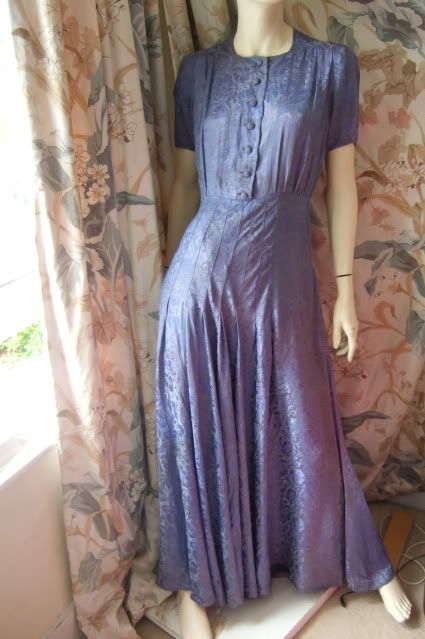
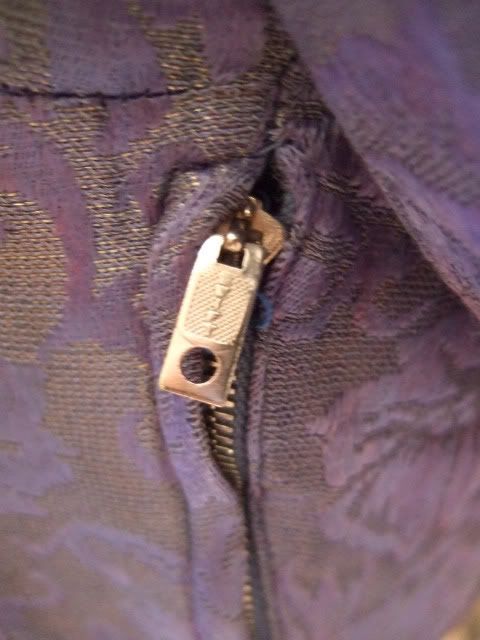
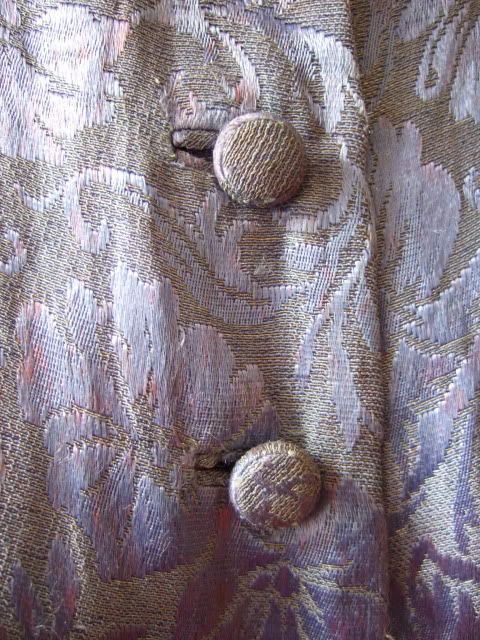
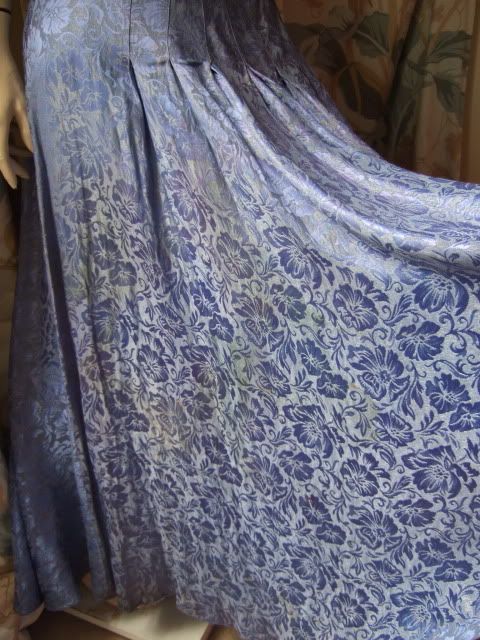
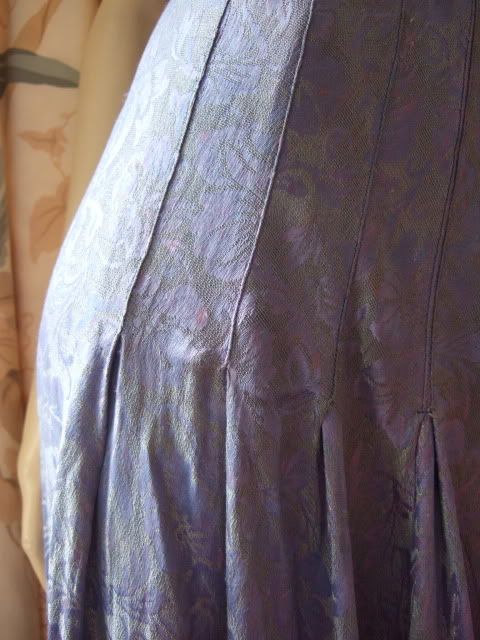
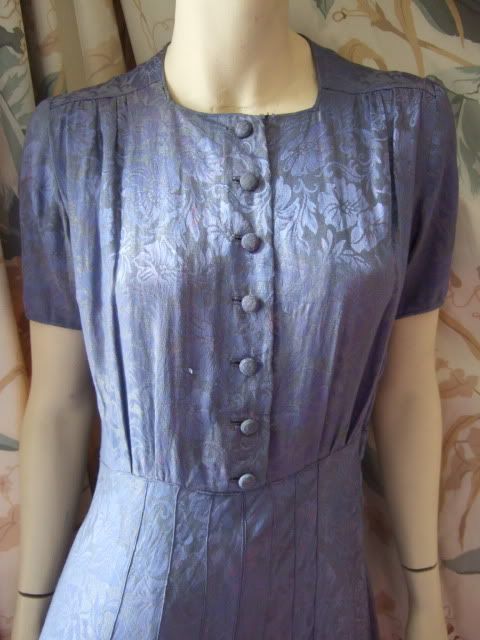
It has a very full skirt. The skirt pleats and yoke are the same at the back. The sleeves are slighly puffed, which doesn't show so much on the pictures - perhaps meant for narrower shoulders. Bound button holes. Inner seams are either hand sewn over, or turned and straight machine stitched. I suspect the hem has been redone because of damage - it's very narrow and straight machine stitched. Fastens with the buttons and a side zip, marked SWIFT, and ENGLAND on the other side.
I thought 40s, am I right? If so, which end?
It's a gorgeous fabric that appears to be a damask shot through with gold thread. It doesn't seem to burn like silk, so perhaps is rayon. I thought I'd call it a metallic damask. Any other thoughts?
Sadly it has a few marks. Some are fading, where its faded to pink, and presumably nothing can be done about that. But some, which I've tried to show in the skirt, appear to be stains or storage marks.
Presumably I shouldn't wash this? I don't tend to dry clean, but if I did would it be likely to deal with those marks? What about steaming?
Both the fading and stains get quite lost, because of both the fullness of the skirt, and the iridescense of the fabric, so I may well disclose and sell as is, especially as the fading will be there whatever I do, but I'd be glad of your thoughts.
Lots of questions! But it boils down to dating, fabric and cleaning advice. Thanks in advance for your advice and expertise.
Ruth






 . Love the shape of it. Not "my" color, but if it were, I wouldn't mind the color fading.
. Love the shape of it. Not "my" color, but if it were, I wouldn't mind the color fading.